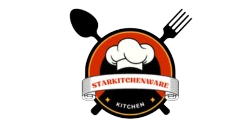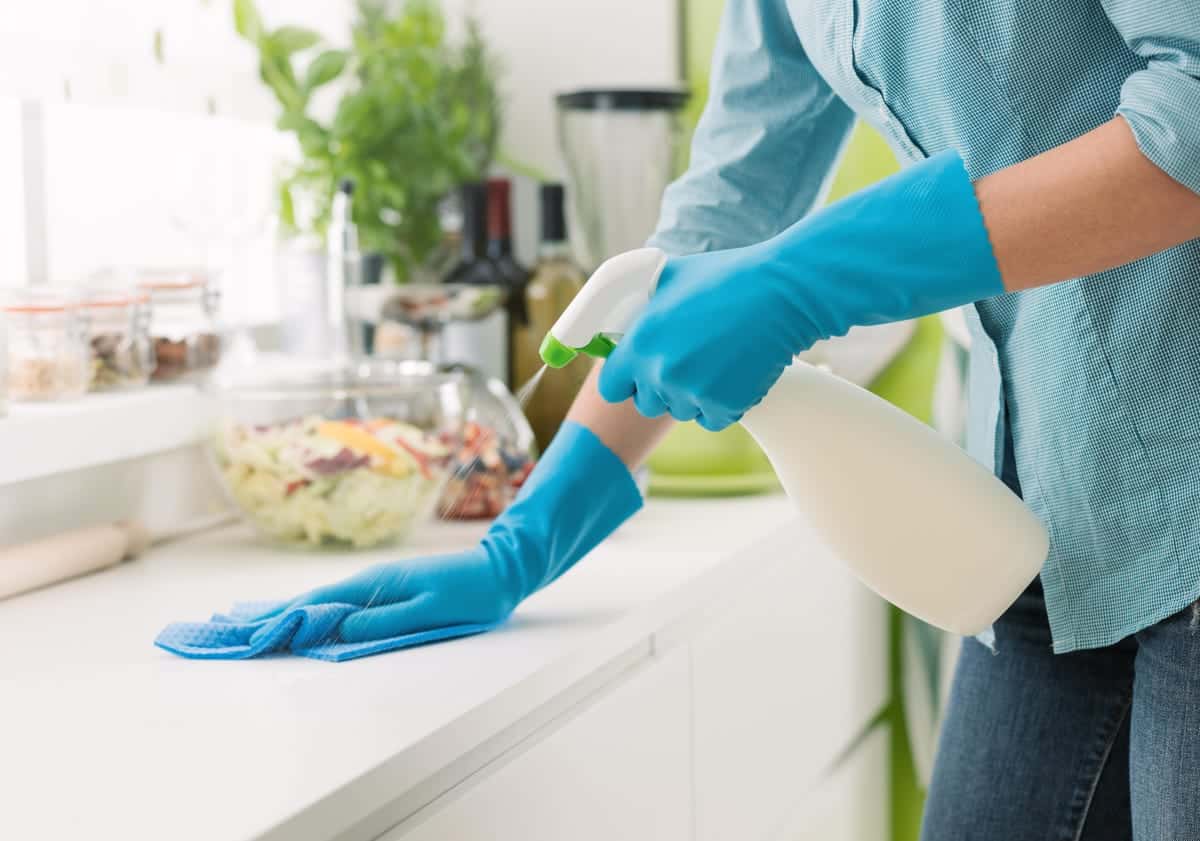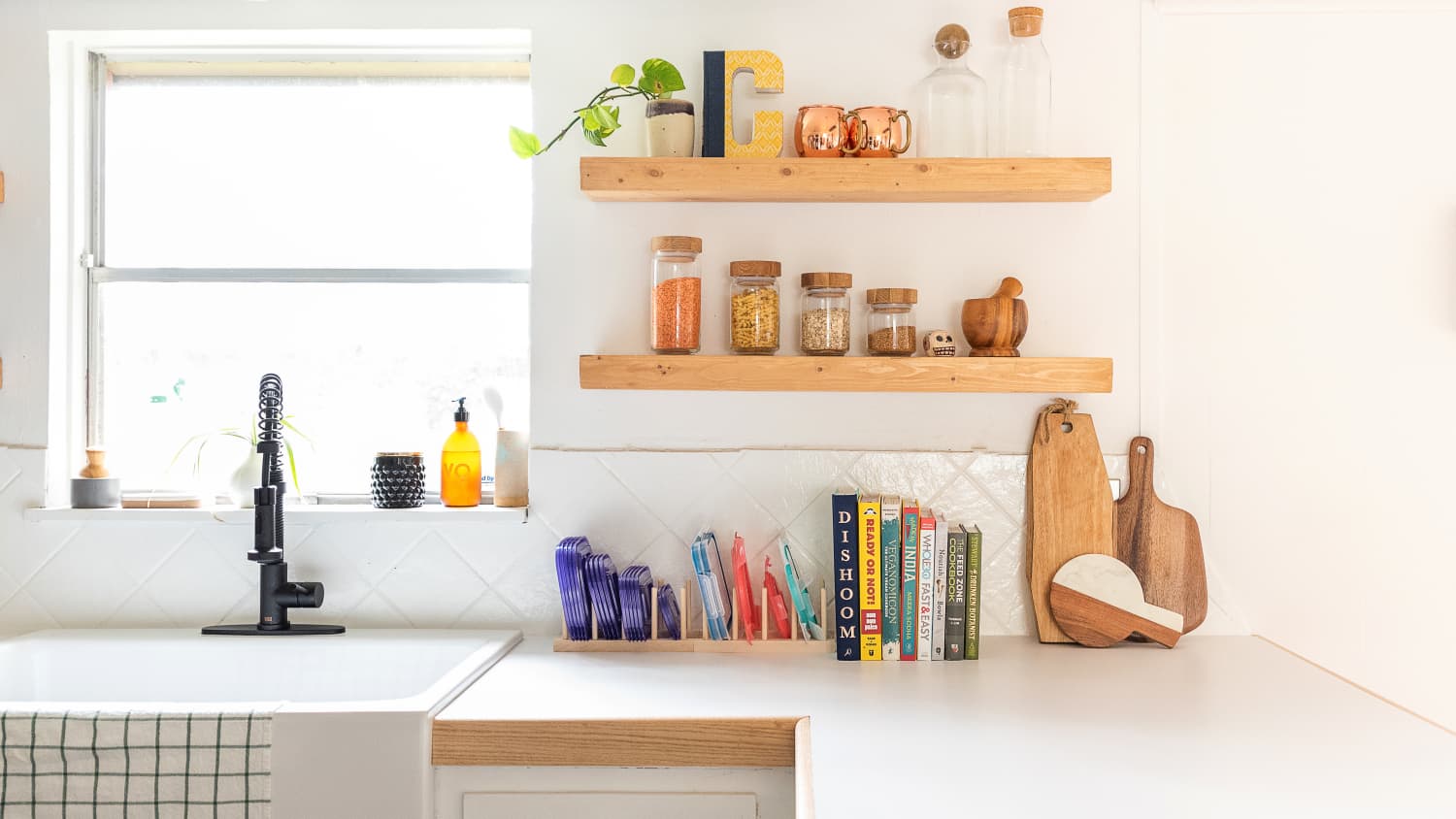Welcome to the ultimate guide for keeping your kitchen clean and sanitized! Whether you’re a seasoned chef or just learning to cook, maintaining a spotless kitchen is essential.
After all, it’s where we prepare food and nourish ourselves and our loved ones. In this post, we’ll share practical tips and tricks on how to keep your kitchen sparkling clean while ensuring top-notch hygiene.
From cleaning supplies to daily routines, we’ve got you covered with everything you need to know so that your kitchen remains a healthy and happy space for everyone who uses it!
How to keep your kitchen clean and organized
If you’re like most people, your kitchen is one of your home’s least-organized and clean places. And it’s not hard to see why. With all the dishes, pots and pans, and appliances crammed onto the countertops, it can be hard to find anything when needed.
But don’t worry; there are plenty of ways to clean and organize your kitchen without spending hours scrubbing pots and pans. In this guide, we’ll show you how to keep your kitchen clean and organized without spending much time on chores.
First, get a place for everything. If you have a lot of dishes, pots and pans strewn all over the kitchen countertops, you will need help finding what you’re looking for. Instead, organize your kitchen by putting all your cooking tools in a dedicated drawer or cabinet. This way, you can easily find what you need while minimizing your time looking for it.
Next, make sure everything has a place where it belongs. Stacks of dirty dishes can quickly become overwhelming; instead of stacking them up in the sink like crazy people do on TV shows, try putting them into one big dishpan or pot so they can all be washed at once. Similarly, please put all your silverware in one spot so it doesn’t take up floor space when unused.
Finally, keep the surfaces clean.
Tips for cleaning appliances
Cleaning appliances can be a hassle, but keeping your kitchen clean and sanitized is worth it. Here are some tips for cleaning appliances:
1. Use warm water and mild soap. Hot water can damage surfaces.
2. Scrub the appliance with a soft cloth or sponge. Do not use harsh chemicals or abrasive cleaners on any metal surfaces.
3. Rinse the appliance off thoroughly with cool water after cleaning.
4. Store appliances in a dry location when not in use to prevent rusting or corrosion.
How to clean utensils and cookware
When it comes to keeping your kitchen clean and sanitized, you can take a few key steps to help keep your food safe.
The first step is to remove any food residue from your utensils and cookware. To do this, use a mild dish soap and water combination. Make sure to rinse everything off completely before storing.
Next, keep your counters and kitchen cabinets clean by regularly wiping them down with a damp cloth. Be especially careful to clean behind appliances and in cracks and corners.
Consider investing in a kitchen cleaner that targets bacteria and grime for particularly dirty areas. These cleaners can be found at most stores or online.
Lastly, always use hand sanitizer when handling food or cleaning your hands. This will help prevent the spread of food-borne illnesses.
Cleaning tips for the fridge, cabinets, countertops and walls
1. Keep a cleaning schedule: If you want your kitchen to stay clean and sanitized, make a schedule for cleaning it. Set aside specific times each week or month for cleaning and maintenance. This will help you stay on top of things and keep your kitchen looking its best.
2. Clean with a disinfectant: When cleaning the kitchen, use a disinfectant to finish the job quickly and effectively. Disinfectants are effective at killing bacteria and removing any food debris that may be present. Use a product specifically for this purpose, as nondisinfectant cleaners can be harmful if used incorrectly.
3. Use a dishwasher: A dishwasher is an incredibly efficient way to clean dishes, pots, and pans. It’s also great for keeping the kitchen clean and sanitized since its scrubbing removes food residue from dishes and utensils. Just be sure to run the dishwasher sparingly, as overuse can lead to wear and tear on appliances and even damage floors or walls.
4. Clean with vinegar: Vinegar is another great option for cleaning kitchens – not only does it kill bacteria, and it has antibacterial properties that help keep surfaces clean and free of germs. Mix equal parts vinegar with water before using it to clean surfaces, then wipe down with a cloth afterwards for extra protection against germs.
5. Use a broom and dustpan: For general cleaning tasks like sweeping and dusting, use a broom and dustpan. These tools are effective at removing dirt, debris and dust from surfaces. Just be sure to sweep and dust in a direction that will lead to less buildup on the floor – this will help keep your floors clean and free of debris.
How to clean the stovetop
If you cook a lot, your kitchen stovetop is bound to get dirty. It’s easy to forget about it, but if left unchecked, food and grease will build up and make your stovetop difficult to clean. Before getting started, give yourself some helpful tips on how to clean the stovetop:
-Wipe down the surface with a dry cloth.
-Use a spatula or wooden spoon to scrape off any food particles or residue.
-Use a cleaner designed specifically for stovetops.
-Rinse off the surface with water and dry off with a towel.
Decluttering your kitchen supplies
If you’re like most people, your kitchen is a mess. Pots and pans are piled high, food wrappers and cans are scattered around, and dirty dishes are stacked in the sink. You might be tempted to ignore the mess and hope it magically disappears. But that won’t work.
Here’s how to declutter your kitchen supplies:
1. Start by organizing your pots and pans. It’s easy to forget where you stored a separate pan or pot, so take time to categorize them. You can group them by type (stovetop, oven, etc.), size (small, medium, large), or function (utensils for cooking). This will make it easier for you to find what you need when cooking and make the kitchen look prettier too!
2. Clean up your countertops. It may seem like a small thing, but keeping your counters clean will help reduce the amount of food residue left behind after cooking. Plus, it just looks nicer! To clean your counters, start by wiping down the surface with a dry cloth, then use a mild soap solution to wash away any dirt or grease buildup. Let the soap dry completely before adding any cleansers or polish – this will keep your counters shiny and new!
3. Clear out your refrigerator shelves. Food residue can accumulate on top of refrigerator shelves over time, meaning that food particles will be left on the food you’re storing inside the fridge. This not only makes your fridge look messier, but it can also make your food taste unpleasant. To clean your refrigerator shelves, start by grabbing a cleaning cloth and wiping down the surface of the shelves. Next, use a mild soap solution to remove dirt or grease buildup. Finally, dry the shelves completely before adding any cleansers or polish – this will keep them shiny and new!
4. Clean up your dishwasher. Like your refrigerator, food can accumulate in your dishwasher over time. This can lead to greasy dishes and water spots on your dishes – not to mention a messy kitchen! To clean your dishwasher, spray it with a household cleaner and then load it with dirty dishes. Run the dishwasher according to the manufacturer’s instructions, then rinse all dishes and utensils in hot water. Finally, dry all of the surfaces in the dishwasher before adding any cleansers or polish – this will keep it looking shiny and new!
Summary
If you’re like most people, your kitchen is a disaster area. Not only is it a mess, but it’s also incredibly difficult to keep clean. Thankfully, there’s an easy solution: clean and sanitize your kitchen regularly! Here are the three steps you need to take to make this happen:
1. Clean Everything Once a Week
This may seem like a lot, but it’s pretty easy. Spend one day a week cleaning everything in your kitchen: the counters, the cabinets, the appliances, and even the floor. This will help to organize things and make your kitchen easier to use.
2. Sanitize Everything Every Week
Just as with cleaning, sanitizing every week doesn’t require much effort. You must pour some bleach or dish soap into a spray bottle and spritz everything down. Let it stand for a few minutes before wiping it all off. Doing this will help prevent food poisoning and other illnesses from spreading in your kitchen.
3. Store Food Properly to Avoid Germs
One of the biggest sources of bacteria in your kitchen is the food itself. To avoid getting sick, always store food properly: in sealed containers that can’t be opened easily, away from heat sources, and out of sight (unless you’re using them for cooking). This will help keep your kitchen germs-free and make cleanup much easier!


